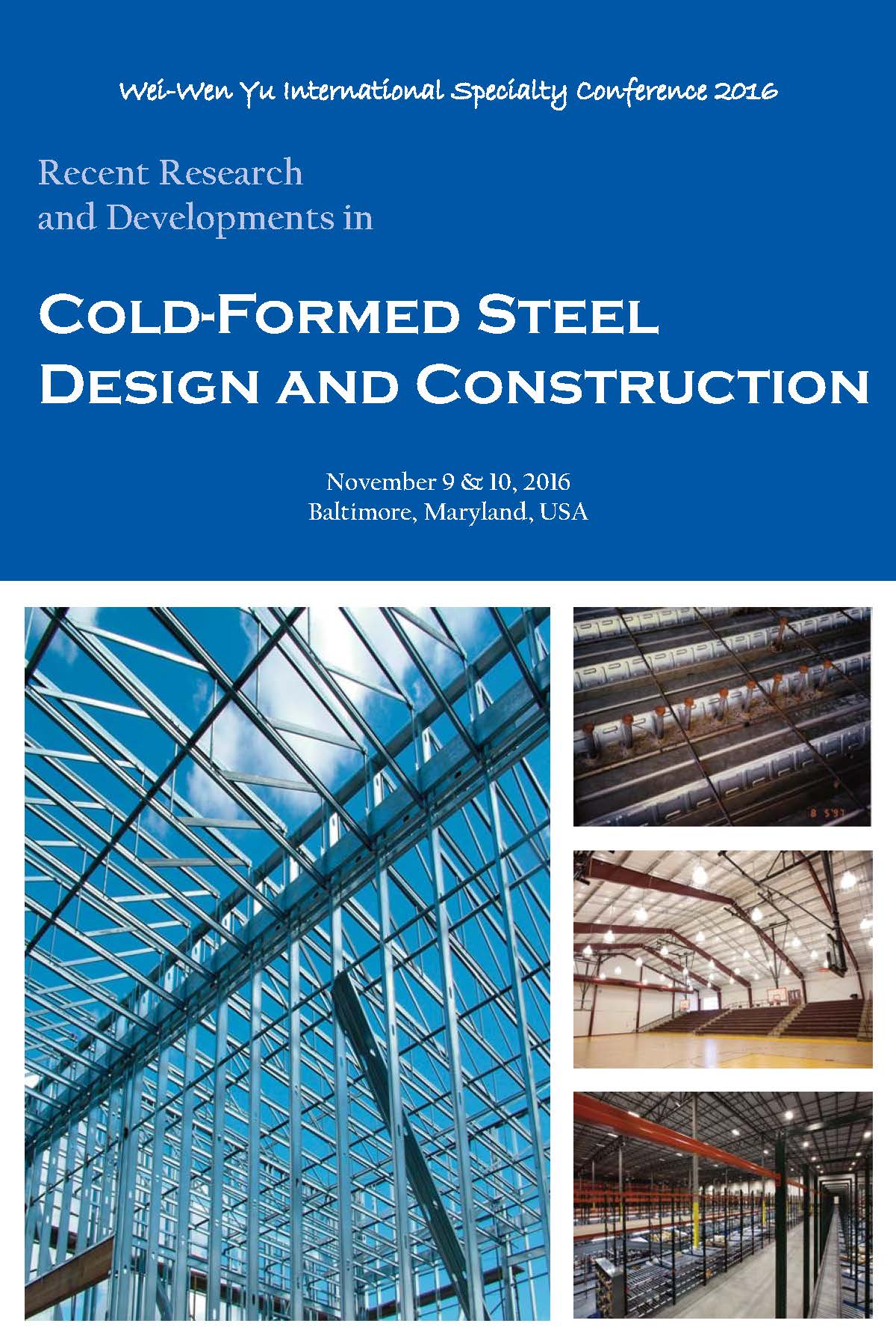Session Dates
10 Nov 2016
Abstract
This paper addresses an ongoing experimental and computational effort on the buckling and strength of built-up cold-formed steel (CFS) columns. Specifically, two 6 in. (152 mm) deep lipped channel sections (i.e. the 600S137-54 and 600S162-54 using AISI S200-12 nomenclature) are studied here in a back-to-back, screw-connected form and were chosen for their local and distortional slenderness to study the effect of fastener spacing and layout on local and distortional buckling and collapse behavior. Thirty column tests are completed with concentric loading. The screw spacing is varied from L to L/6, where L is the column length, with and without varying lengths of End Fastener Groups (EFG), which are a prescriptive layout of fasteners at the ends of built-up columns that is required by AISI S100-12 and is intended to insure end rigidity and increase composite action. Results yield two general types of deformation modes: compatible (where the connected webs conform to the same buckling shape) and isolated stud buckling. Buckling loads and half-wavelengths of deformation are shown to be affected by the tighter screw spacings. EFGs increase compatibility of buckling, but prove to be an inefficient (costly) method of fastening studs together. Future work includes expanding the design methods for built-up CFS columns to explicitly account for local and distortional buckling behavior of the built-up section, and to develop efficient numerical tools supporting a new design method under development.
Department(s)
Civil, Architectural and Environmental Engineering
Research Center/Lab(s)
Wei-Wen Yu Center for Cold-Formed Steel Structures
Meeting Name
International Specialty Conference on Cold-Formed Steel Structures 2016
Publisher
Missouri University of Science and Technology
Document Version
Final Version
Rights
© 2016 Missouri University of Science and Technology, All rights reserved.
Document Type
Article - Conference proceedings
File Type
text
Language
English
Recommended Citation
Fratamico, David C.; Torabian, Shahabeddin; Rasmussen, Kim J. R.; and Schafer, Benjamin W., "Experimental Investigation of the Effect of Screw Fastener Spacing on the Local and Distortional Buckling Behavior of Built-Up Cold-Formed Steel Columns" (2016). CCFSS Proceedings of International Specialty Conference on Cold-Formed Steel Structures (1971 - 2018). 1.
https://scholarsmine.mst.edu/isccss/23iccfss/session8/1
Experimental Investigation of the Effect of Screw Fastener Spacing on the Local and Distortional Buckling Behavior of Built-Up Cold-Formed Steel Columns
This paper addresses an ongoing experimental and computational effort on the buckling and strength of built-up cold-formed steel (CFS) columns. Specifically, two 6 in. (152 mm) deep lipped channel sections (i.e. the 600S137-54 and 600S162-54 using AISI S200-12 nomenclature) are studied here in a back-to-back, screw-connected form and were chosen for their local and distortional slenderness to study the effect of fastener spacing and layout on local and distortional buckling and collapse behavior. Thirty column tests are completed with concentric loading. The screw spacing is varied from L to L/6, where L is the column length, with and without varying lengths of End Fastener Groups (EFG), which are a prescriptive layout of fasteners at the ends of built-up columns that is required by AISI S100-12 and is intended to insure end rigidity and increase composite action. Results yield two general types of deformation modes: compatible (where the connected webs conform to the same buckling shape) and isolated stud buckling. Buckling loads and half-wavelengths of deformation are shown to be affected by the tighter screw spacings. EFGs increase compatibility of buckling, but prove to be an inefficient (costly) method of fastening studs together. Future work includes expanding the design methods for built-up CFS columns to explicitly account for local and distortional buckling behavior of the built-up section, and to develop efficient numerical tools supporting a new design method under development.



